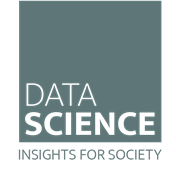Data Science - Insights for Society
Institute of Information Systems Engineering (ISE)Faculty of Informatics
Technische Universität Wien
Projects
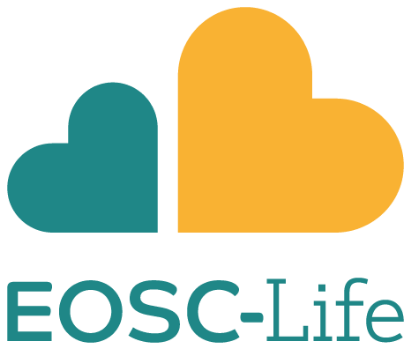 EOSC Life: H2020 Project: Building a Digital Space for the Life Sciences
EOSC Life: H2020 Project: Building a Digital Space for the Life Sciences(2019 (2021) - 2023) EOSC-Life brings together the 13 Life Science ‘ESFRI’ research infrastructures (LS RIs) to create an open, digital and collaborative space for biological and medical research. The project will publish ‘FAIR’ data and a catalogue of services provided by participating RIs for the management, storage and reuse of data in the European Open Science Cloud (EOSC). This space will be accessible to European research communities.
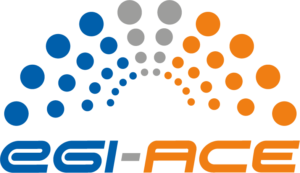 EGI-ACE: H2020 Project: Advanced Computing for EOSC
EGI-ACE: H2020 Project: Advanced Computing for EOSC(2021-2023) EGI-ACE is a 30-month project coordinated by the EGI Foundation with a mission to empower researchers from all disciplines to collaborate in data- and compute-intensive research through free-at-point-of-use services. Building on the distributed computing integration in the EOSC-hub project, EGI-ACE will deliver the EOSC Compute Platform and will contribute to the EOSC Data Commons through a federation of cloud compute and storage facilities, PaaS services and data spaces with analytics tools and federated access services. The consortium of the project builds on the expertise and assets of the EGI federation members, key research communities, data providers and collaborating initiatives. The services of EGI-ACE are accessible through the EOSC Marketplace.
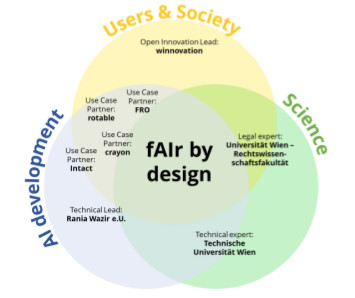 fAIr by Design: FFG Project: fAIr by Design
fAIr by Design: FFG Project: fAIr by Design(2021-2023) articularly in critical appli-cation areas (working life - human resources, health, etc.), increased requirements in terms of ethics, legal conformity and technical robustness can be expected in the near future in order to guarantee that AI applications do not lead to negative social effects and are trustworthy overall (Trustworthy AI Framework). In order to avoid socially and technologically discriminating bias, ethical considerations and social science methods have to be incorporated, which is not considered in the AI development up to now and not reflected in the conventional processes and test procedures of AI development. This shortcoming is addressed by the project fAIr by design, which aims at the development of a novel generic procedural model and a corresponding method toolbox for the development of fair, non-discriminatory AI, involving different user groups and 5 use cases. Using open innova-tion methods, data scientists, AI experts, social scientists, legal experts and the respective appli-cation experts from companies and other organizations will develop modules and strategies for risk reduction for different discrimination risks, which will then be concluded and further devel-oped in a generic process model and a method toolbox for the prevention of discrimination.
 FDABMBWF: FAIR Data Austria
FDABMBWF: FAIR Data Austria (2020-2022) The FAIR Data Austria project is designed to strengthen knowledge transfer between universities, industry, and society und supports the sustainable implementation of the European Open Science Cloud (EOSC). Within the project, implementation of the FAIR principles (which mandate that research data be Findable, Accessible, Interoperable, and Reusable) plays a major role. Observation of the FAIR principles is secured through 1) integrated data management aligned with generic and discipline-specific needs of researchers, 2) development of next-generation repositories for research data, code, and other research outputs, and 3) development of training and support services for efficient research data management. FAIR Data Austria thereby offers tools to complement the Austrian Data Lab and Services as well as RIS Synergy projects. Supporting the entire data lifecycle – from data generation all the way to data archiving – with the appropriate tools and expertise is essential to achieve efficient research data management according to the FAIR principles, a process that can only be successful when supported by all Austrian HEIs.
 FDABMBWF: Austrian Data Lab and Services
FDABMBWF: Austrian Data Lab and Services (2020-2022) The Austrian DataLAB and Services project is an initiative funded by the Austrian Government to foster collaborative approaches between our partner universities in the fields of DataScience and High Performance Computing (HPC). The explicit goal is to increase usability and lower the learning curve for researchers and students when using compute resources in their daily work.
 EOSC Secretariat: H2020 Project: Supporting the overall governance of the European Open Science Cloud
EOSC Secretariat: H2020 Project: Supporting the overall governance of the European Open Science Cloud(2019-2021) EOSCsecretariat.eu addresses the need for the set-up of an operational framework supporting the overall governance of the European Open Science Cloud (EOSC). Led by a lean consortium of experienced and complementary partners, the project maintains a practical approach to address all the specific needs of the coordination structure expected by the EOSC. Furthermore, it retains a high degree of flexibility in its roll-out plan by adopting a co-creation approach, founded on a substantial budget left available for all upcoming, foreseen and unforeseen, challenges of introducing a truly operational open science cloud serving all European stakeholders. EOSCsecretariat.eu is also characterised by being neutral towards the community it is serving and by having a pragmatic approach that is fully dedicated to realising the outcomes of the EOSC design as stated by the Staff Working Document and adopted council conclusions.
 IDSDL: InnovationslehrgangInnovation Course Program Data Science und Deep Learning
IDSDL: InnovationslehrgangInnovation Course Program Data Science und Deep Learning(2017-2020) The potential of Big Data analytics in companies is very high. Companies that implement data-driven innovation have 5%-10% higher growth in productivity than those that do not. The application of Big Data analytics in the EU between 2014 and 2020 will increase GNP (GDP) by 1.9%. Due to the high demand, IDC estimates that 770,000 Data Scientist jobs will be unfilled in the EU in 2020. The innovation course "Data Science and Deep Learning" strengthens the knowledge of the latest approaches in the field of data science in companies and thus enables the implementation of data-driven innovation.
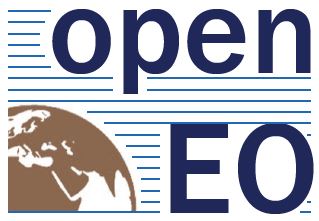 openEO: H2020 Project: A Common, Open Source Interface between Earth Observation Data Infrastructures and Front-End Applications
openEO: H2020 Project: A Common, Open Source Interface between Earth Observation Data Infrastructures and Front-End Applications(2017-2020) openEO is a H2020 project funded under call EO-2-2017: EO Big Data Shift. The capabilities of the latest generation of Earth observation satellites to collect large volumes of diverse and thematically rich data are unprecedented. For exploiting these valuable data sets, many research and industry groups have started to shift their processing into the cloud. Although the functionalities of existing cloud computing solutions largely overlap, they are all custom-made and tailored to the specific data infrastructures. This lack of standards not only makes it hard for end users and application developers to develop generic front-ends, but also to compare the cloud offerings by running the same analysis against different cloud back-ends. To solve this, a common interface that allows end- and intermediate users to query cloud-based back offices and carry out computations on them in a simple way is needed. The openEO project will design such an interface, implement it as an open source community project, bind it to generic analytics front-ends and evaluate it against a set of relevant Earth observation cloud back offices. The openEO interface will consist of three layers of Application Programming Interfaces, namely a core API for finding, accessing, and processing large datasets, a driver APIs to connect to back offices operated by European and worldwide industry, and client APIs for analysing these datasets using R, Python and JavaScript. To demonstrate the capability of the openEO interface, four use cases based chiefly on Sentinel-1 and Sentinel-2 time series will be implemented. openEO will simplify the use of cloud-based processing engines, allow switching between cloud-based back office providers and comparing them, and enable reproducible, open Earth observation science. Thereby, openEO reduces the entry barriers for the adaptation of cloud computing technologies by a broad user community and paves the way for the federation of infrastructure capabilities.
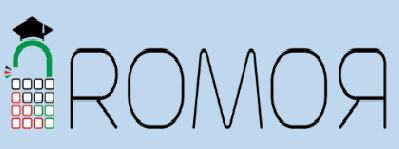 ROMOR: Erasmus+ Capacity Project: Research Output Management through Open Access Institutional Repositories
ROMOR: Erasmus+ Capacity Project: Research Output Management through Open Access Institutional Repositories(2016-2019) ROMOR aims over the course of three years to build capacity on research output management in four leading PS HEIs by establishing Open Access Institutional Repositories (OAIR). The training which is required to establish these repositories, and then their implementation, population and management will be the core of the project. Learning outcomes from these activities will also be shared and disseminated in a variety of ways, including the establishment of mechanisms to assist proactively other institutions in setting up and managing repositories. This Project aims to improve not only the visibility and the management of scientific research, but also to support the advocacy in support of open access to research outputs and to foster scholarly communication and coordination between PS HEIs.
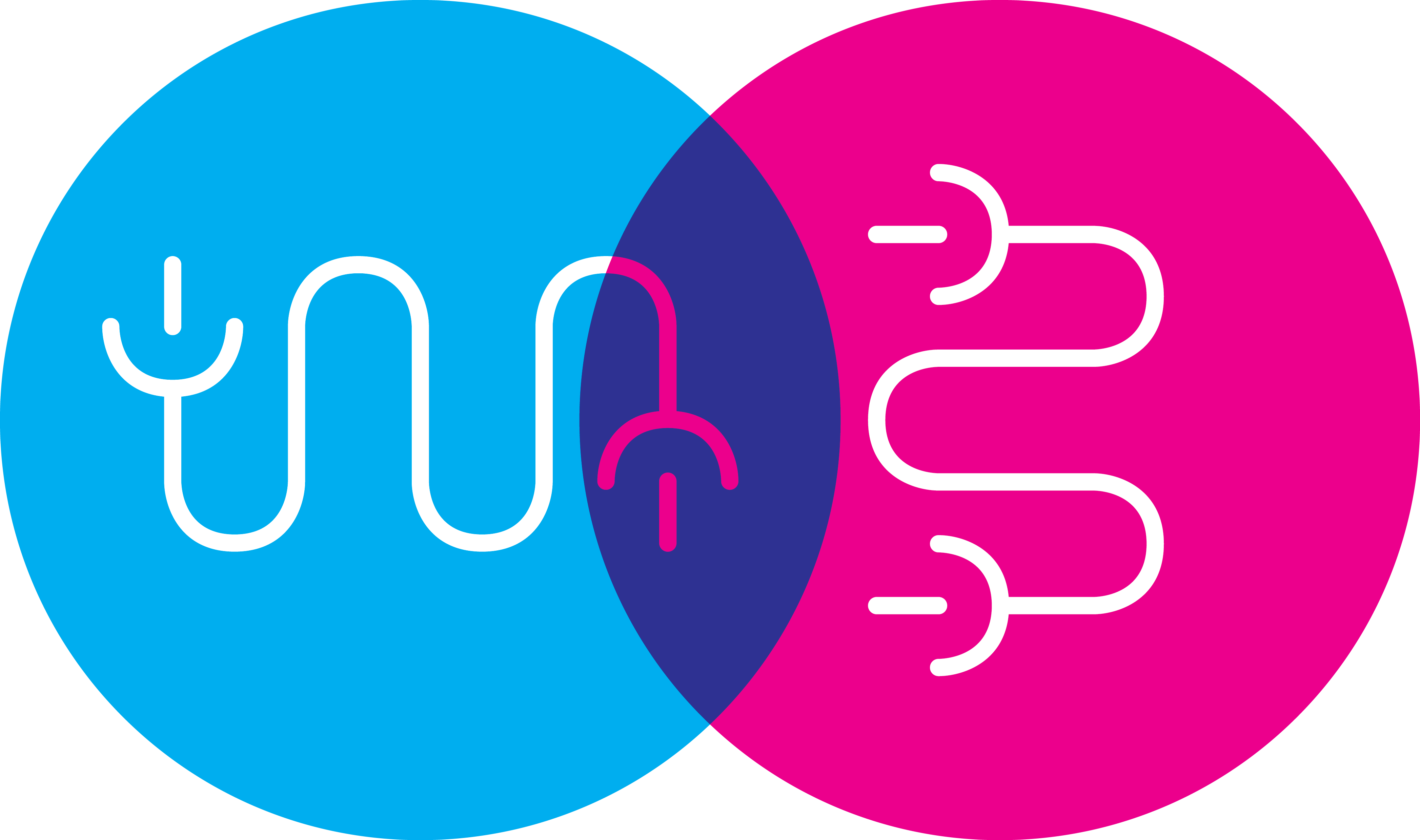 MusicBricks: H2020 Project: Musical Building Blocks for Digital Makers and Content Creators
MusicBricks: H2020 Project: Musical Building Blocks for Digital Makers and Content Creators(2015-2017) Immersive and engaging participatory and collaborative modes of production are characteristic of the emerging creative economies of music media and require novel ICT solutions. The most innovative ICT solutions in this sector come from the top EU research centres. The MusicBricks project exploits the creative and commercial possibilities of music technologies by piloting innovative musical tools with the new generation of SME digital makers and content creators, and leverages the state-of-the-art European research, by providing a compendium of physical, virtual and programming interfaces, thus allowing creative developers easy access to the core building blocks of music. MusicBricks thus provides a pathway for research to reach a wider community of Creative SME innovators, thereby contributing to cultural and economic output right across the creative sector. Our aim is to transfer state-of-the-art ICT to Creative SMEs in order to develop novel business models.
 KNOWeSCAPE: COST Action TD1210 on Analyzing the dynamics of information and knowledge landscapes
KNOWeSCAPE: COST Action TD1210 on Analyzing the dynamics of information and knowledge landscapes(2013-2017)There is no escape from the expansion of information, so that structuring and locating meaningful knowledge becomes ever more difficult. This Action will tackle this urgent problem using the unique networking and capacity-building features provided by the COST framework. For the first time, a platform will be created where information professionals, sociologists, physicists, digital humanities scholars and computer scientists collaborate on problems of data mining and data curation in collections. The main objective of this Action is advancing the analysis of large knowledge spaces and systems that organize and order them. The combination of insights from complexity theory and knowledge organization will improve our understanding of the collective, self-organized nature of human knowledge production and will support the development of new principles and methods of data representation, processing, and archiving. To this end, the knowledge organization in web-based information spaces such as Wikipedia as well as collections from libraries, archives, and museums will be studied. This Action aims to create interactive knowledge maps. Their end users could be scientists working between disciplines and seeking mutual understanding; science policy makers designing funding frameworks; cultural heritage institutions aiming at better access to their collections; and students seeking a first orientation in academia.
 4C:
FP7 Coordination Action (CA) Collaboration to Clarify the Costs of Curation (4C)
4C:
FP7 Coordination Action (CA) Collaboration to Clarify the Costs of Curation (4C) (via the Digital Preservation Team at Secure Business Austria)
(2013-2015) 4C will help organisations across Europe to invest more effectively in digital curation and preservation. Research in digital preservation and curation has tended to emphasise the cost and complexity of the task in hand. 4C reminds us that the point of this investment is to realise a benefit, so our research must encompass related concepts such as risk, value, quality and sustainability. Organisations that understand this will be more able to effectively control and manage their digital assets over time, but they may also be able to create new cost-effective solutions and services for others.
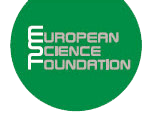 ELIAS: European Science Foundation (ESF) Research Networking Program: Evaluating Information Access Systems
ELIAS: European Science Foundation (ESF) Research Networking Program: Evaluating Information Access Systems
(2011-2016) Although the speed of computers and volume of information has grown
exponentially since the first search engines were created in the 1950s, the methods used to test state of the art information access systems have changed little. However, there is growing scientific evidence of a need for a complete
testing overhaul: producing novel evaluation methods that take a user-oriented
perspective on assessing the effectiveness of information access systems. The
proposed network will establish a research and training programme for the evaluation of information access systems which will define a new measurement paradigm based on so-called living laboratories.
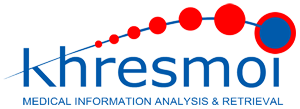 KHRESMOI: FP7 Integrated Project (IP) Medical Information Analysis and Retrieval
KHRESMOI: FP7 Integrated Project (IP) Medical Information Analysis and Retrieval
(2011-2014) Khresmoi aims to develop a multi-lingual multi-modal search and access system for biomedical information and documents. This will be achieved by
(1) Effective automated information extraction from biomedical documents, including improvements using crowd sourcing and active learning, and automated estimation of the level of trust and target user expertise;
(2) Automated analysis and indexing for medical images in 2D (X-Rays), 3D (MRI, CT), and 4D (MRI with a time component);
(3) Linking information extracted from unstructured or semi-structured biomedical texts and images to structured information in knowledge bases;
(4) Support of cross-language search, including multi-lingual queries, and returning machine-translated pertinent excerpts, and
(5) Adaptive user interfaces to assist in formulating queries and display search results via ergonomic and interactive visualizations.
The research will flow into several open source components, which will be integrated into an innovative open architecture for robust and scalable biomedical information search.
 SCAPE: FP7 Integrated Project (IP) Scalable Preservation Environments
SCAPE: FP7 Integrated Project (IP) Scalable Preservation Environments(2011-2014) The SCAPE project will enhance the state of the art of digital preservation in three ways: by developing infrastructure and tools for scalable preservation actions; by providing a framework for automated, quality-assured preservation workflows and by integrating these components with a policy-based preservation planning and watch system. These concrete project results will be validated within three large-scale Testbeds from diverse application areas: Digital Repositories from the library community, Web Content from the web archiving community, and Research Data Sets from the scientific community. Each Testbed has been selected because it highlights unique challenges. SCAPE will develop scalable services for planning and execution of institutional preservation strategies on an open source platform that orchestrates semi-automated workflows for large-scale, heterogeneous collections of complex digital objects.
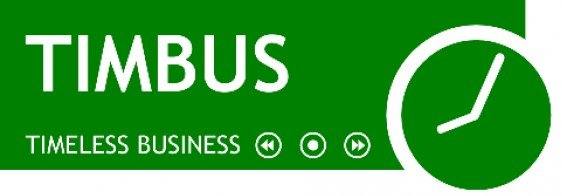 Timbus: FP7 Integrated Project (IP) Digital Preservation for Timeless Business Processes and Services
Timbus: FP7 Integrated Project (IP) Digital Preservation for Timeless Business Processes and Services (via the Digital Preservation Team at Secure Business Austria)
(2011-2015) The digital preservation problem is well-understood for query-centric information scenarios but has been less explored for scenarios where the important digital information to be preserved is the execution context within which data is processed, analysed, transformed and rendered. Furthermore, preservation is often considered as a set of activities carried out in the isolation of a single domain, without considering the dependencies on third-party services, information and capabilities that will be necessary to validate digital information in a future usage context. TIMBUS will endeavour to enlarge the understanding of DP to include the set of activities, processes and tools that ensure continued access to services and software necessary to produce the context within which information can be accessed, properly rendered, validated and transformed into knowledge. One of the fundamental requirements is to preserve the functional and non-functional specifications of services and software, along with their dependencies.
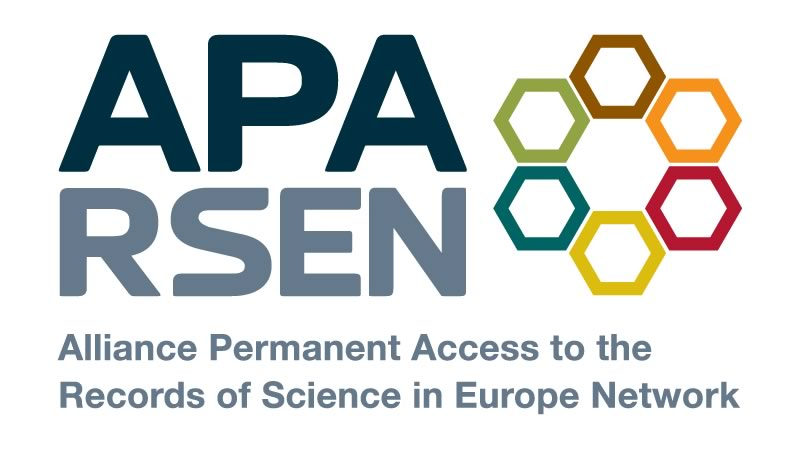 APARSEN: FP7 Network of Excellence (NOE): Alliance Permanent Access to the Records of Science in Europe Network
APARSEN: FP7 Network of Excellence (NOE): Alliance Permanent Access to the Records of Science in Europe Network(via the Digital Preservation Team at Secure Business Austria)
(2011-2014) Digital preservation offers the economic and social benefits associated with the long-term preservation of information, knowledge and know-how for re-use by later generations. However, digital preservation has a great problem, namely that preservation support structures are built on projects which are short lived and is fragmented. The unique feature of APARSEN is that it is building on the already established Alliance for Permanent Access (APA). APARSEN will bring together a wide range of experts in digital preservation including academic and commercial researchers. APARSEN will help to combine and integrate these programmes into a shared programme of work, thereby creating the pre-eminent virtual research centre in digital preservation. It provides a natural basis for a longer term consolidation of digital preservation research and expertise.
 MUMIA: COST Action IC1002 on Multilingual and Multifaceted Interactive Information Access
MUMIA: COST Action IC1002 on Multilingual and Multifaceted Interactive Information Access(2010-2014) The tremendous power and speed of current search engines to respond, almost instantaneously to millions of user queries on a daily basis is one of the greatest successes of the past decade. While this technology empowers users need to extract relevant information from the hundreds of thousands of terabytes of existing data available on the web, the next decade presents many new grand challenges. This next wave of search technology is faced with even greater demands, not only in terms of volume of requests, but also in terms of the changes to the content available, and the dynamics of Web 2.0+ data being produced. These increased and new demands mean that search technology must be able to search, filter, extract, combine, integrate, and process multiple and distributed sources of multilingual content, delivered to an even wider global audience and variety of population. Inevitably, Multilingual and Multifaceted Interactive Information Access (MUMIA) research and development will be a key part of the next generation of search technology. Machine Translation (MT), Information Retrieval (IR) and Multifaceted Interactive Information Access (MIIA) are three disciplines which address the main components of MUMIA.
 CHORUS+: FP7 Coordinating Action Coordinated approacH to the eurOpean effoRt on aUdio-visual Search engines
CHORUS+: FP7 Coordinating Action Coordinated approacH to the eurOpean effoRt on aUdio-visual Search engines (2010-2012) CHORUS+ aims to create the conditions of mutual information exchange and cross fertilisation between the FP7 projects in the search-engines domain and the recently launched national and international initiatives in this area. A particular emphasis on setting concrete R&D and industrial objectives for multimedia search in Europe is planed through the implementation of discussion groups limited to selected representatives (industry, academia) and the organisation and on open participation at workshops, conferences and summer schools.
(2009-2012) In this project, an alternative way to capture the concept of a patent will be explored. This will investigate logic or semi logical features of expression in patent text. There are some grammar models that try to capture the semantics of a sentence i.e. leaving the surface base of a sentence, which is represented by the sentence words, and transforming sentence into a semantic representation format. Examples of grammar models that with different methods transform surface base to semantic representation are: Head-driven Phrase Structure Grammar, Construction Grammar, and Frame semantics.
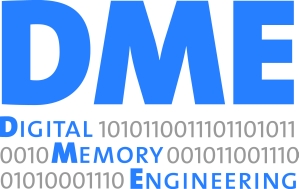 DME: Digital Memory Engineering:
DME: Digital Memory Engineering:
(2009-2011)
DME is a research studio as part of the Research Studios Austria programme of the Austrian Research Promotion Agency (Österreichische Forschungsförderungsgesellschaft, FFG). It conducts industry-oriented research and development in the field of digital preservation. The aim of the DME is the development of preservation solutions for the industry with a special focus on SMEs. The core research aspects of the research studio are:
- Workflow based support for business archiving solution:
Compliances with international standards and best practice models, integration into existing document management systems - Long term preservation of multimedia content:
Research on preservation strategies for multimedia content and systems for archiving embedded multimedia content (wikis, online archives, etc.) - Archiving solutions for small institutions and SOHOs (Small offices and home offices):
Research on a fully-automated archiving systems for users with limited know-how and awareness of digital preservation, development of a prototype archiving system
IMPACT: Austrian Academic Exchange Service Project on Improving Music genre classification Performance by a novel Approach of Combining audio and symbolic music descriptors. (2007-2009)
 PLANETS: EU FP6 Integrated Project on Preservation and Long-term Access Networked Services:
PLANETS: EU FP6 Integrated Project on Preservation and Long-term Access Networked Services:
Digital media have become the dominant way that we create, shape, and exchange information. Unlike paper, however, we have very limited abilities to ensure that today's digital information will be accessible in 10, 50, or 100 years. Unless we act now, we will lose access to the first decades of the digital era, and future generations will see a gaping hole in their cultural and scientific record.
The Planets project brings together European National Libraries and Archives, leading research institutions, and technology companies to address the challenge of preserving access to digital cultural and scientific knowledge.
The four year project is funded by the European Commission Information Science and Technologies Framework Programe 6 Call 5 (FP6 Call 5).
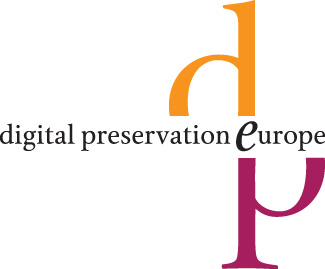 DPE: EU FP6 Coordinated Action Digital Preservation Europe:
DPE: EU FP6 Coordinated Action Digital Preservation Europe:
Electronic resources are a central part of our cultural and intellectual heritage; but this material is at risk. Digital memory needs constant management, using new techniques and processes, to contain such risks as technological obsolescence. Risk begins before the digital record is created and continues for as long as the digital object needs to be retained. Digital preservation is too big an issue for individual institutions or even sectors to address independently. Concerted action at both national and international level is required. DigitalPreservationEurope facilitates pooling of the complementary expertise that exists across the academic research, cultural, public administration, and industry sectors in Europe.
 DELOS: EU FP6 Network of Excellence on Digital Libraries:
DELOS: EU FP6 Network of Excellence on Digital Libraries:
The DELOS network, started in January 2004, intends to conduct a joint program of activities aimed at integrating and coordinating the ongoing research activities of the major European teams working in Digital Library - related areas with the goal of developing the next generation Digital Library technologies.
The focus of our contributions are on Cluster 3: Audio/Visual and Non-Traditional Objects, as well as Cluster 6: Digital Preservation.
 MUSCLE: EU FP6 Network of Excellence on Multimedia Understanding through Semantics, Computation, and Learning:
MUSCLE: EU FP6 Network of Excellence on Multimedia Understanding through Semantics, Computation, and Learning:
The MUSCLE network, started in March 2004, aims at creating and supporting a pan-European Network of Excellence to foster close collaboration between research groups in multimedia datamining on the one hand and machine learning on the other.
The focus of our contribution lies particulalrly in the field of Single Modality Processing, particulalry in the fields of text and audio analysis.

ec3, founded in 2000 as an industrial competence centre within the so-called "K-ind programme" of the Austrian Federal Ministry of Economics and Labour, is a private research association cooperating with business and university partners to conduct and promote applied research as well as specific projects in the field of electronic business. ec3 deliberately operates as an intermediary between science and business practice, building on its multi-disciplinary approach and based on the high qualification of its research staff covering a broad range of skills.
Within ec3 we are particularly involved with the iSpaces research unit, addressing all aspects related to the creation, exploration, and understanding of, as well as interaction with large and potentially heterogeneous multimedia information spaces. A further area of competence consists in providing partner support in structuring document repositories, putting documents into a larger context, thus assisting in the discovery and intuitive retrieval of information. To this end, iSpaces combines exploratory and data analysis techniques from information retrieval, data mining, user interface design, and information visualization, to unleash the potential of information available in businesses.
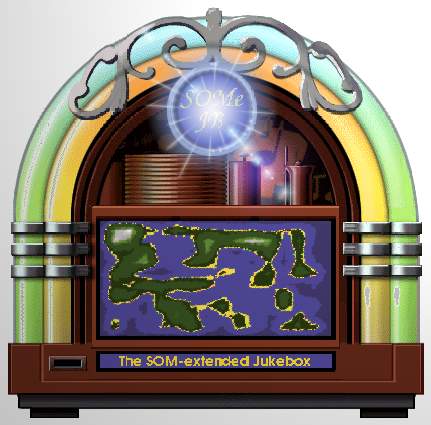 SOMeJB: The SOM-enhanced JukeBox:
SOMeJB: The SOM-enhanced JukeBox:
The SOMeJB system builds upon the principles of the SOMLib system to create a digital library for music by combining a variety of technologies from the fields of audio processing, neural networks, and information visualization.
It is based on the self-organizing map (SOM), a popular unsupervised neural network, and its extension, the Growing Hierarchical Self-Organizing Map (GHSOM), used to organize pieces of music available as, e.g., mp3 files, according to their musical sound characteristics, i.e. creating a kind of genre-based organization. Islands of Music and Weather Charts provide an intuitive interface to the system.
The project website contains detailed descriptions of the system, source-code for download, as well as demos, allowing you to browse some of our music collections and listen to excerpts in MP3-format from a wide range of popular and classical music.
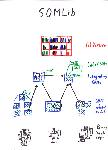 SOMLib Digital Library Project:
SOMLib Digital Library Project:
The SOMLIB digital library system supports intuitive, user friendly browsing of document collections by combining the benefits of conventional library organisation with the possibilities offered by digital collections.
The SOMLib system builds upon the modules of several sub-projects, specifically the GHSOM neural network and the libViewer library visualization tool.
It is based on the self-organizing map (SOM), a popular unsupervised neural network, as well as its hierarchical, adaptive extension, the GHSOM.
These neural networks are used to organize documents by content into bookshelves.
Metaphor graphics based on the libViewer system facilitate the intuitive representation of the resulting document archive, allowing users
to get an instant overview of its content and characteristics.
The project website contains detailed descriptions of the system, source-code for download, as well as demos, allowing you to browse news articles form, e.g. the Austrian Daily Newspaper "Der Standard", or the Russian News Agency "Nowosti".
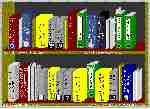 The libViewer Digital Library Interface:
The libViewer Digital Library Interface:
The cover of a book, the title, type of binding, the shape of the binding (brand new versus well-used and almost torn apart), the size of the book, color and other properties of an item on the shelve contain a wealth of information that most people are accustomed to and able to interpret intuitively.
Thus it is easy for us to gain an intuitive overview of the contents of a library and the type of information present.
The libViewer system provides an intuitive user interface to a digital library by providing a graphical interpretation of metadata.
Documents are assigned a physical representation template such as books, binders, papers etc., with further metadata such as language, date of last reference etc. being encoded by a set of additional metaphors such as the thickness of documents, dust, fingerprints, logos and spiderwebs.
Check this project website for the source-code of the system as well as some on-line demos of our prototype
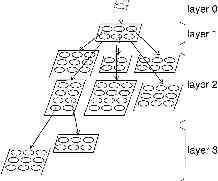 GHSOM - The Growing Hierarchical Self-Organizing Map :
GHSOM - The Growing Hierarchical Self-Organizing Map :
In spite of the stability and popularity of the Self-Organizing Map (SOM), at least two limitations have to be noted, which are related, on the one hand, to the static architecture of this model, as well as, on the other hand, to the limited capabilities for the representation of hierarchical relations of the data.
With our novel Growing Hierarchical Self-Organizing Map (GHSOM) we address both limitations.
The growing hierarchical som is an artificial neural network model with
hierarchical architecture composed of independent growing self-organizing
maps.
By providing a global orientation of the independently growing
maps in the individual layers of the hierarchy, navigation across branches
is facilitated.
The GHSOM is used as a basis for data organization in both the SOMLib and SOMeJB systems, and forms a core component in the KONTERM project.
 Austria On-Line Archive (AOLA):Archiving the Austrian Internet :
Austria On-Line Archive (AOLA):Archiving the Austrian Internet :
The amount of information published on the Internet continues to grow at a tremendous rate. Yet, contrary to conventional publications, little of what is published on the World Wide Web is actually preserved in an archive. The need for creating an archive of the information published on the Web, being part of humankind's cultural heritage, while addressing privacy issues, is being recognised by national libraries worldwide, and resulted in the creation of numerous projects.
The AOLA project is performed in cooperation with the
Austrian National Library (OeNB) and evaluates methods for collecting and preserving the digital cultural heritage of the Austrian Internet.
 KONTERM: Content-based analysis of legal documents:
KONTERM: Content-based analysis of legal documents:
KONTERM is a research project of the Research Center for Computers and Law, Institute of Public International Law, University of Vienna, Faculty of Law in co-operation with the Institute of Applied Informatics, Department for Informations Systems, University of Vienna, and the Institute of Software Engineering, Technical University of Vienna. It aims at the semiautomatic analysis of legal documents.
The SOM and GHSOM neural networks are used to provide content-based organization of legal documents.
 GOAL: Geographical Information On-line Analysis:
GOAL: Geographical Information On-line Analysis:
The GOAL project (EU, INCO-Copernicus, 1998-2001) analysed ways to integrate data warehouses with geographical information systems. Such an integrated system is able to support top executives in their decision-making by providing them with the information stored in the form of geographical information or by mapping data into the geographical domain.

